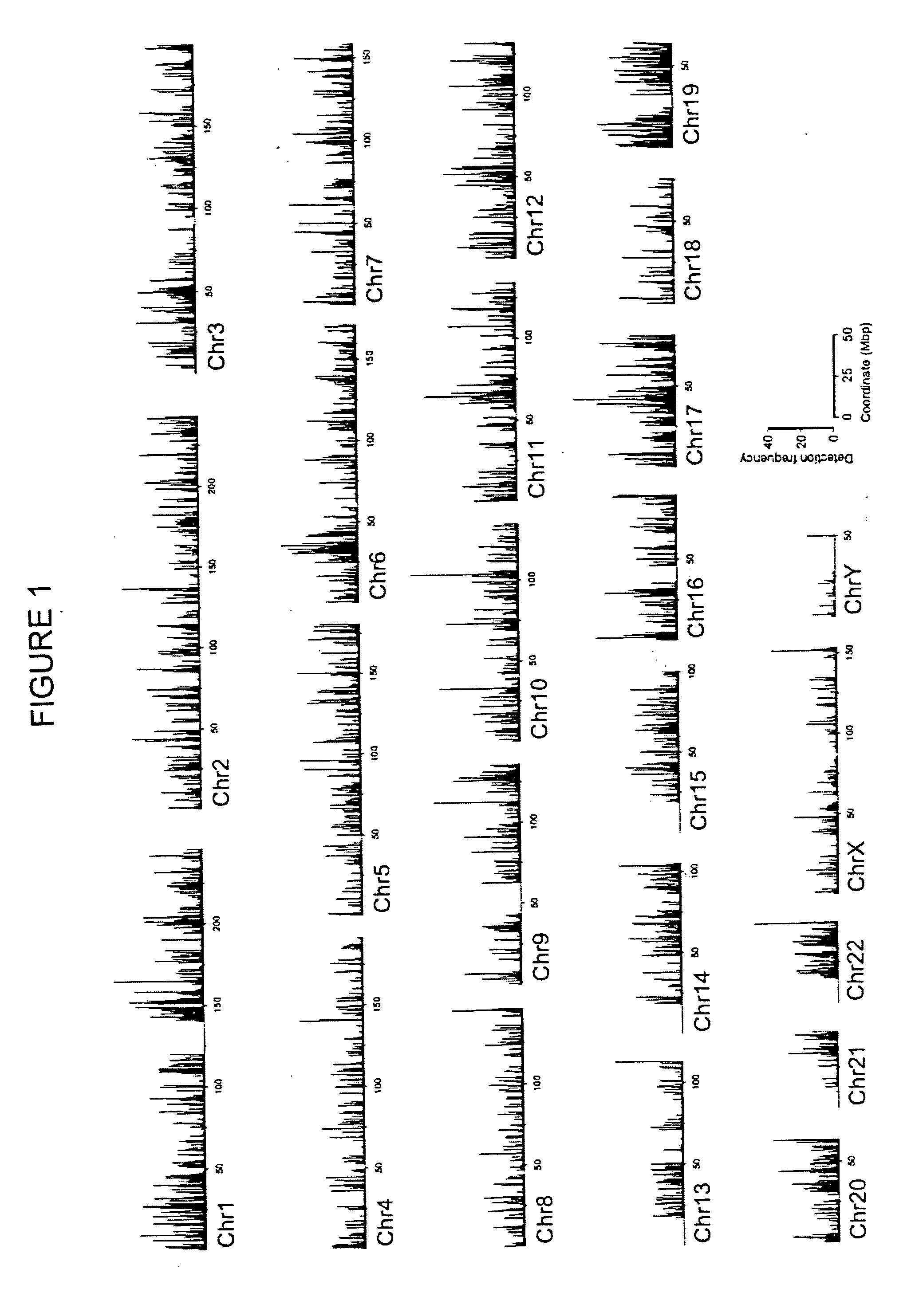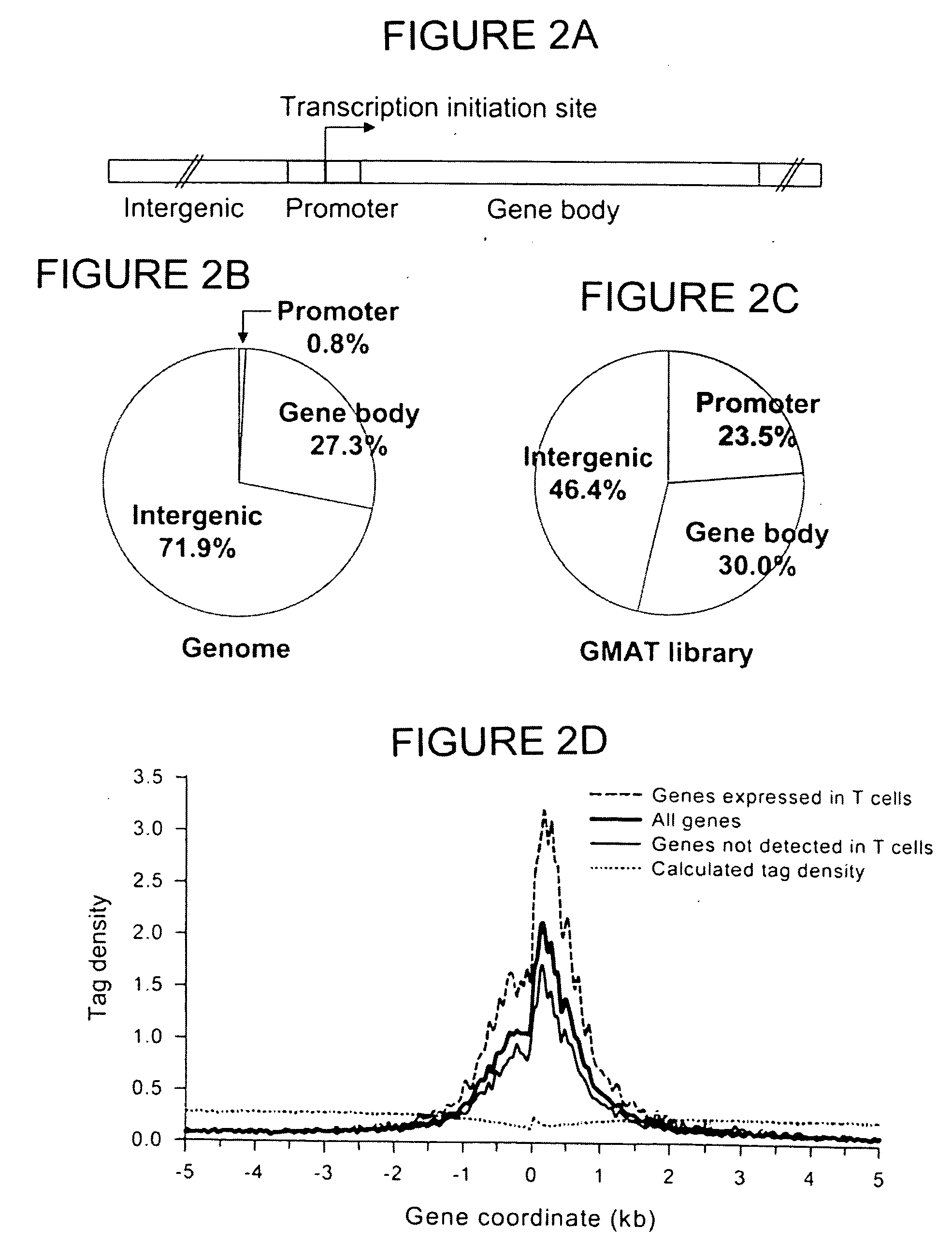Method of identifying active chromatin domains
- Summary
- Abstract
- Description
- Claims
- Application Information
AI Technical Summary
Benefits of technology
Problems solved by technology
Method used
Image
Examples
example 1
[0046] This example demonstrates use of the inventive method to map the genome-wide distribution of K9 / K14 diacetylated histone H3-DNA interactions in resting and activated human T cells.
[0047] In vivo evidence regarding the function of histone acetylation in regulating gene expression stems from genetics studies in lower eukaryotic organisms such as yeast, which displays high levels of histone acetylation in the whole genome (Kurdistani & Grunstein, supra; Roh et al., Nat. Biotechnol., 22: 1013-6 (2004)). Higher eukaryotic genomes differ from yeast in having much lower acetylation levels and more heterochromatic regions. Previous studies suggest that the whole active domain of chromatin is uniformly hyperacetylated when it is activated (Litt et al., EMBO J, 20: 2224-35 (2001)). The data below suggest that chromatin accessibility of a genetic locus is not caused by uniform hyperacetylation; instead, the openness is controlled by hyperacetylation of a limited number of regulatory el...
example 2
[0066] This example demonstrates the ability of the inventive method to identify active chromatin domains.
[0067] The materials and methods described in Example 1 were used to confirm that H3 acetylation is a hallmark of active sites in chromatin. To determine if H3 acetylation is biased toward any functional regions in the human genome, the human genome was arbitrarily defined as consisting of three parts: (a) a 2 kb-promoter regions including 1 kb upstream and 1 kb downstream of the transcription initiation site, (b) gene body regions including introns and exons, (c) and intergenic regions (FIG. 2A). The 2 kb-promoter region makes up 0.8% of the genome (FIG. 2B). The gene body and intergenic regions make up 27.3% and 71.9% of the genome, respectively. Interestingly, 23.5% of the tags detected in the GMAT library were derived from the promoter region, and 30.0% and 46.4% of the tags were from the gene body and intergenic regions, respectively (FIG. 2C). These results indicate that ...
example 3
[0071] This example demonstrates a method of identifying acetylation islands using the materials and methods described in Examples 1 and 2.
[0072] Examination of high-resolution maps generated in Example 2 revealed clusters of two or more GMAT-tags along the chromatin fiber signifying acetylation (“acetylation islands”) (highlighted in FIGS. 3 and 4). An acetylation island was defined by the following criteria: (i) it is composed of tags from more than two adjacent NlaIII sites; (ii) the detection frequency of all the tags is more than or equal to one; and (iii) neighboring acetylation islands are separated by greater than 500 bp. A total of 21,481 and 25,332 acetylation islands were detected in intergenic and transcribed regions, respectively.
[0073] Comparative genomics studies have identified about 270,000 conserved noncoding sequences (CNSs) in the human and mouse genomes (Hardison, Trends Genet., 16: 369-72 (2000)), which are believed to be regulatory elements in the mammalian ...
PUM
| Property | Measurement | Unit |
|---|---|---|
| Fraction | aaaaa | aaaaa |
| Fraction | aaaaa | aaaaa |
| Fraction | aaaaa | aaaaa |
Abstract
Description
Claims
Application Information
 Login to View More
Login to View More - R&D
- Intellectual Property
- Life Sciences
- Materials
- Tech Scout
- Unparalleled Data Quality
- Higher Quality Content
- 60% Fewer Hallucinations
Browse by: Latest US Patents, China's latest patents, Technical Efficacy Thesaurus, Application Domain, Technology Topic, Popular Technical Reports.
© 2025 PatSnap. All rights reserved.Legal|Privacy policy|Modern Slavery Act Transparency Statement|Sitemap|About US| Contact US: help@patsnap.com



